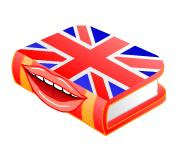Athens 1896

The winners in the first Olympics of the modern era did not receive a medal of gold, but silver, while those who came in second place won a bronze.
The medal shows Zeus, father of the gods, carrying Nike, the goddess of victory. The back shows the Acropolis.
The medal shows Zeus, father of the gods, carrying Nike, the goddess of victory. The back shows the Acropolis.
Paris 1900

Nike, goddess of victory, and a victorious athlete.
St. Louis 1904

The medal shows an athlete wearing a laurel wreath, symbol of victory, on a relief in honor of the ancient Olympic sport. Nike appears on the other side.
London 1908

Two women portrayed an athlete crowned with laurel, while the back shows a picture St. George, the patron saint of England.
Stockholm 1912

The medals include the image of a decreeing herald the opening of the Olympics and the bust of Swedish gymnast Pehr Henrik Ling.
Antwerp 1920

This design celebrates the mythology of the Roman soldier Silvius Brabo, who reportedly fought and killed the giant Druoon Antigoon and threw his hand into the river Scheldt in Antwerp.
Paris 1924

This design emphasizes the spirit of sportsmanship, one athlete helping another. The back shows sports equipment and a harp, as evidence of the cultural aspect of the Olympics.
Amsterdam 1928

The Florentine sculptor and painter Giuseppe Cassioli won a competition organized by the International Olympic Committee and its design was used, almost identically, on the medals of the Games between 1928 and 1968.
On the front the image of the goddess of victory Nike wearing the crown of victory and a palm. On the back a winning athlete being charged by a mob.
On the front the image of the goddess of victory Nike wearing the crown of victory and a palm. On the back a winning athlete being charged by a mob.
Los Angeles 1932

Berlin 1936

London 1948

Helsinki 1952

Melbourne 1956

Rome 1960

While the design is similar, the medals incorporate a ring bay leaf and a bronze chain.
Tokyo 1964

Mexico 1968

Munich 1972

The organizers of the Munich Olympics broke with the tradition that lasted for 44 years. Gerhard Marcks, the German Bauhaus design school, portrayed Castor and Pollux, who in Greek mythology were the twin sons of Leda.
Montreal 1976

The tendency to show a simple design on the back of the medals is held in Montreal, leaving only a laurel wreath logo and Olympic Games.
Moscow 1980

The idea of showing the logo of the host city continues, this time accompanied by a stylized representation of a stadium, the Olympic flame and the cauldron.
Los Angeles 1984

The medals recovered Cassioli design, but also incorporate the work of American illustrator Dugald Stermer.
Seoul 1988

With a modern design, the back of the medals depict a dove carrying a branch of laurel and Seoul Olympic logo.
Barcelona 1992

The Spanish sculptor Xavier Corbero, make up the figure of Nike adapting to the time and place the logo of Barcelona on the back: an athlete with the blue Mediterranean in the head, the yellow of the sun arms and legs jumping red.
Atlanta 1996

The games in the United States marked a return to a traditional design with the Nike image. Back displays the emblem of Atlanta, with the Olympic flame and stars, a branch of laurel and a letter commemorating the centennial year of the Games.
Sydney 2000

It is perhaps the most controversial design. Criticized because next to the goddess Nike was not a figure inspired by Greece but in the Roman Coliseum. On the back, the Australian designer Woljciech Pietranik placed the facade of the Opera House and an Olympic torch.
Athens 2004

The medal shows Nike flying over the Panathinaiko Stadium, which hosted the Games in 1896 in honor of the victory of the stronger, taller and faster. Back is an inscription in ancient Greek under the logo.
Beijing 2008

The Greek goddess remains on the front stage, while in the back of each medal is embedded a small piece of jade, the prized gemstone in China.
London 2012

The medal is the largest of all the summer games. The artist David Watkins says the symbols on the front and back are the goddess Nike, the spirit and tradition of the Games and the Thames, the city of London. On the back is the logo of London 2012, representing the modern city like a jewel. The logo is a design of chopsticks (or mikado) in which radiates the energy of athletes and provides a sense of togetherness. The River Thames runs through the middle, like a ribbon, to make sense of celebration. The concave shape of the back is reminiscent of the ancient amphitheater, with a box in the center to give balance to the composition. Sports and their disciplines are engraved on the edge of each medal, which were minted by the Royal House of the Currency of the United Kingdom.
http://www.bbc.co.uk


















































































